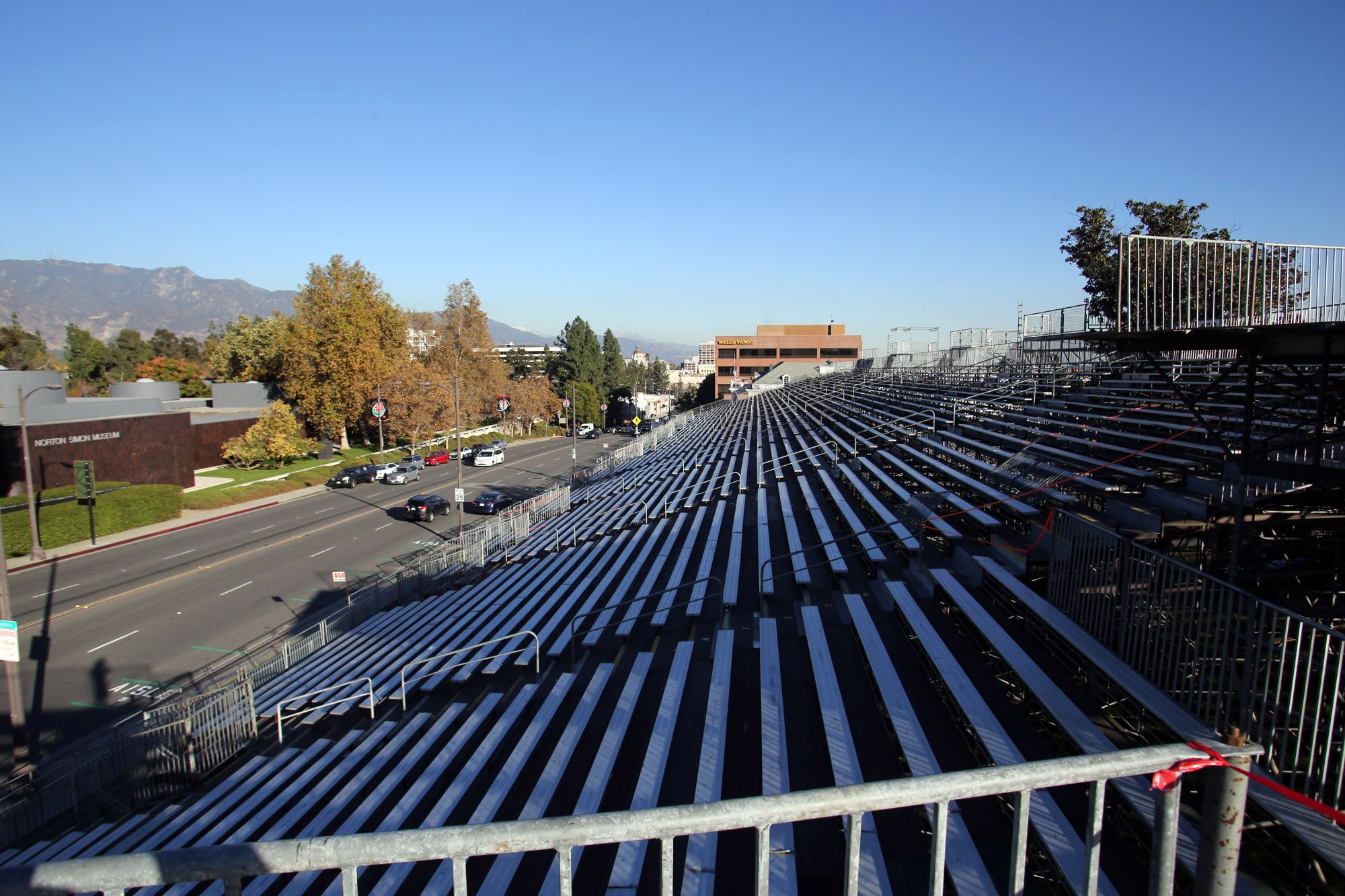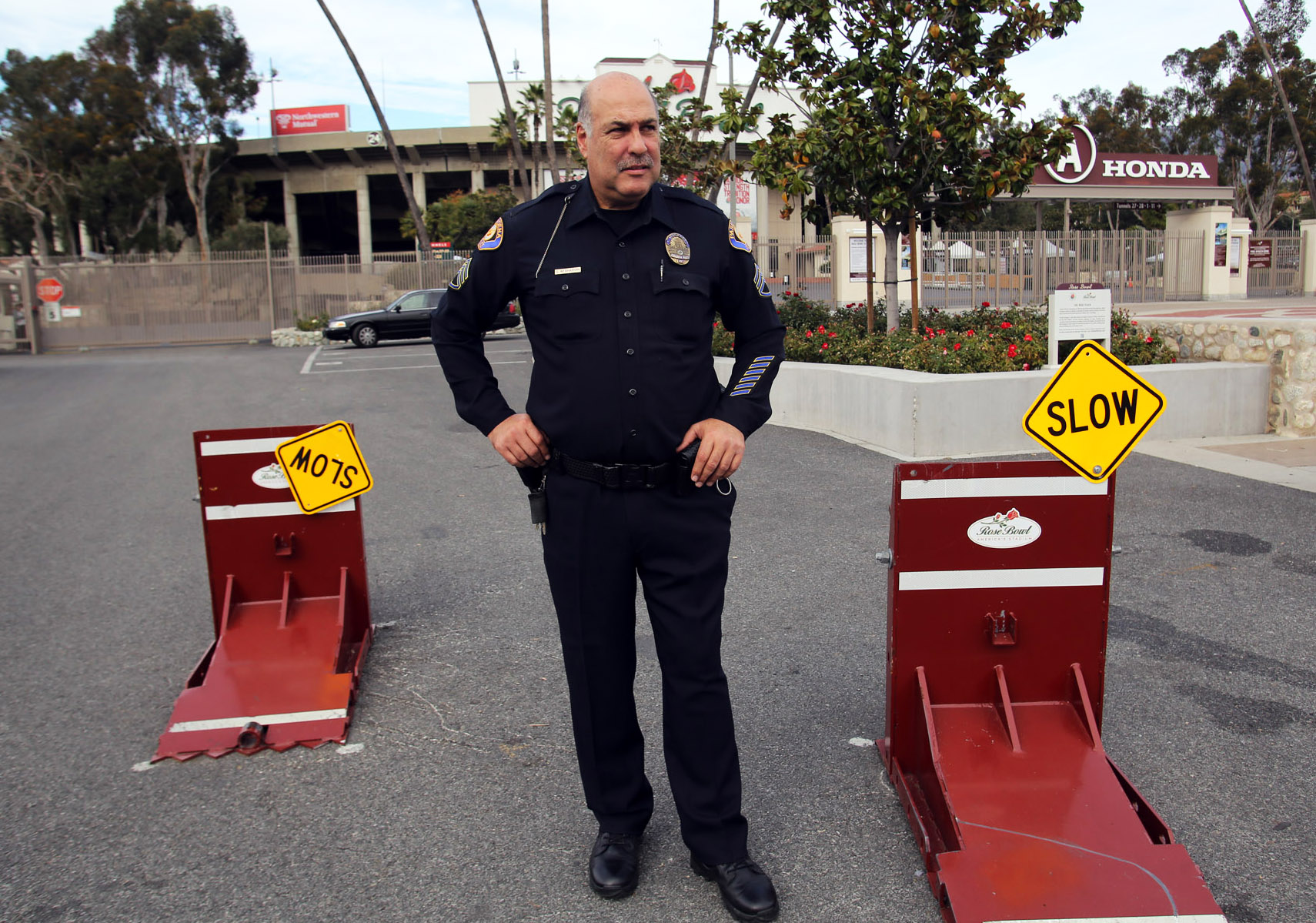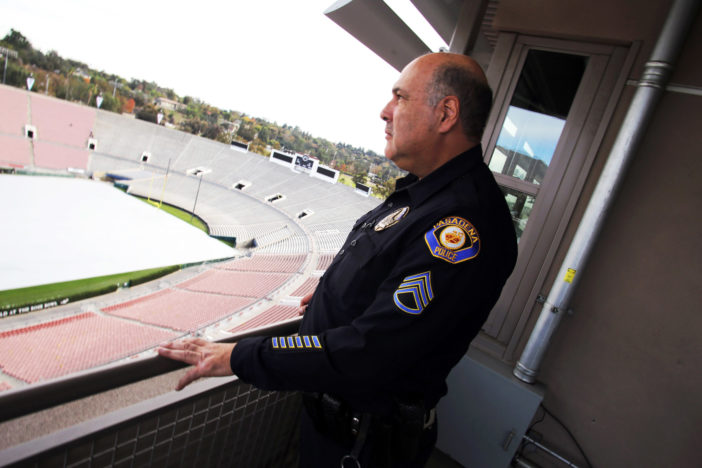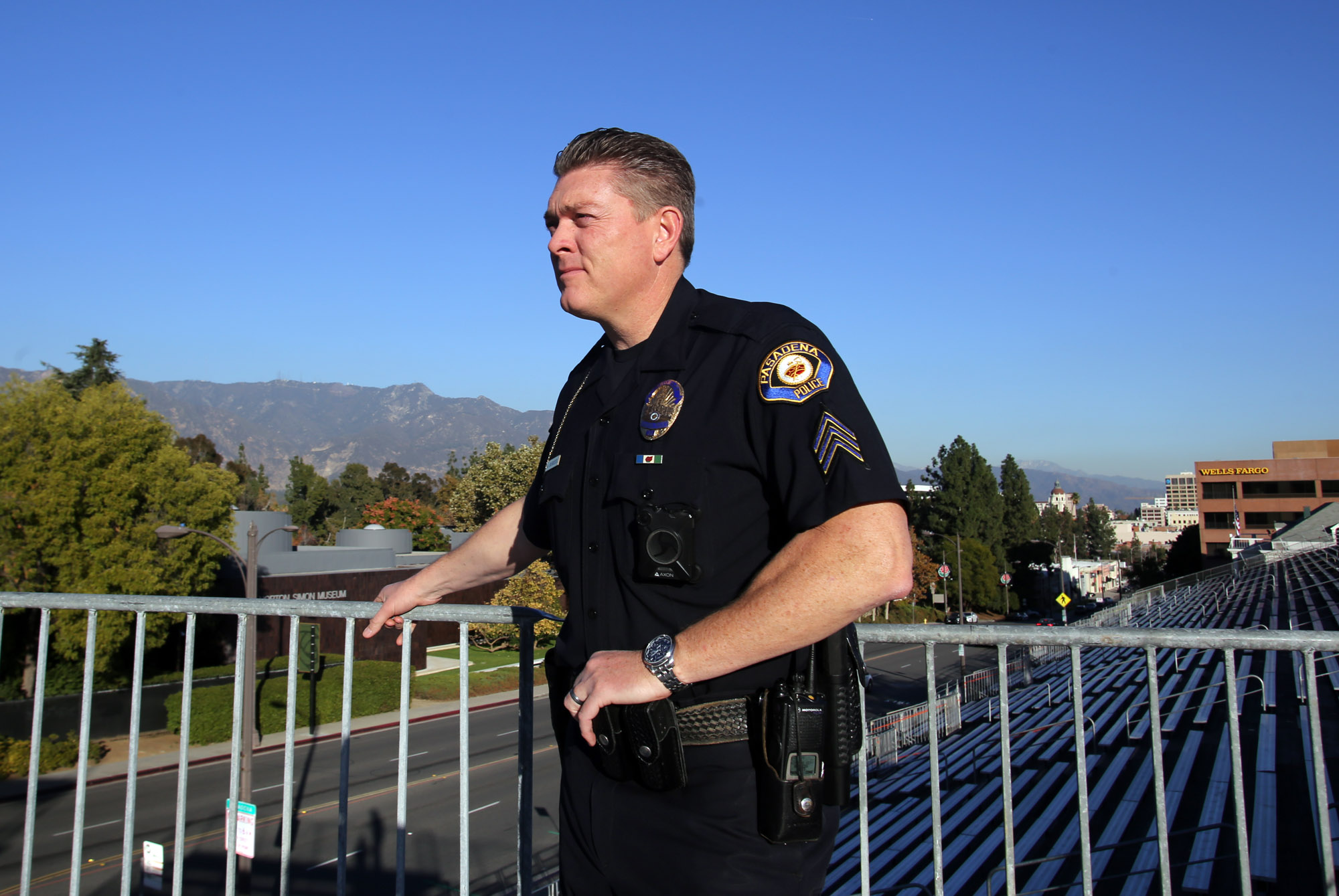When Pasadena Police Sgt. Greg Afsharian talks about the Rose Parade, he refers to it in two different ways:
Before 9/11.
After 9/11.
Each side of the coin strikingly different than the other.
For anyone who grew up in Pasadena, memories of New Year’s Eve include cruising the 5½ mile stretch of Colorado Boulevard to honk at those brave enough to sleep curbside for the best “free” seats at the Rose Parade.
New Year’s in Rose City has always been known for being busy, stressful and overwhelming. That’s what was expected and Pasadena PD prepared for it.
Then 9/11 happened and everything changed.
Afsharian joined the Pasadena PD in 1989 and worked in the city’s Special Investigations Unit. He worked cases with the Drug Enforcement Administration (DEA), the Federal Bureau of Investigation (FBI) and other state and federal agencies dealing with intelligence.
In the post-9/11 world, his connections became an invaluable resource to help with the creation of the department’s first Counter Terrorism Unit.
In 2002, the world now changed, Pasadena PD celebrated its first Rose Parade and Rose Bowl game with the help of the Department’s new Threat Assessment Response Team (T.A.R.T.)

The beginning of the 5 mile Tournament of Roses parade route on Colorado Boulevard. Photo by James Carbone.
The Threat Assessment Response Team
Tucked away in the corner of Pasadena PD’s Event Planning office, the Counter Terrorism Unit is a small room packed with maps, industrial-size file cabinets, and an arsenal of two-way radios.
The unit is made up of Afsharian and Sgt. Anthony Burgess, and together the two officers bring in hundreds of resources from the state and federal level to create a small army that can blanket the city on New Year’s Day.
They are known as Pasadena’s T.A.R.T Team.
“What we want is when a family of four gets here and decides to spend the night on the sidewalk all they see is this seamless, calm and peaceful event. They don’t even have to think about anything, because we’ve been working on this for months,” said Sgt. Burgess, who has been with the department for 26 years.
For months, the T.A.R.T team prepares for this one day where 500,000 to 800,000 visitors come to Pasadena to be a part of an American tradition.
The Rose Bowl is prepped and swept for danger.
K9 bomb dogs walk the parade route with their handlers. At the Rose Bowl they are set loose, walking each stair, going through the locker rooms and sprinting through the grassy field.
X-ray machines are set up and all vehicles are scanned as they come in and out of the Rose Bowl.
Command Stations are set up in different locations in the city.
Plainclothes agents and officers are scattered throughout the crowds.
Pasadena’s Air Transportation Unit prepares to keep an eye on rooftops, ridges and the scenic Arroyo.
Intelligence pods are strategically placed and agents monitor them for radiation activity.
Law enforcement officials continually scour social media for anything suspicious or an imminent threat.
Cameras are placed in the Rose Bowl and throughout the parade route allowing intelligence officials to see everything happening.
“If you’re scratching your nose. We can see it,” Afsharian says.

Steal vehicle barriers that can stop any vehicle at an instant are placed in front of the Rose Bowl Stadium. Photo by James Carbone.
A New Normal
As safety precautions have increased in the last few years, Afsharian and Burgess have seen the public adjust to the ‘new normal’ that comes with protecting large crowds.
Last year, the Counter Terrorism Unit implemented car barriers and closed down the parade route to vehicles after 10 p.m., a first in the parade’s 130-year history.
These days, it’s not unusual to see law enforcement officials carrying long rifles in public along the parade route and at the Rose Bowl game. In a pre-9/11 world, this level of police presence was taboo, Afsharian said. Police officers in the past were trained to hide their long rifles behind their back, but in the last few years this has changed.
“At first, stakeholders were concerned. But now we have a visible presence and people actually appreciate it. We get a positive response from people at the parade and at the game. They say thank you,” Afsharian said. “People have accepted this is the new normal.”

Sergeant Anthony Burgess from the Counter Intelligence team for the Pasadena Police Department walks under the bleachers on corner of Orange Grove Boulevard and Colorado Boulevard at the beginning of Tournament of Roses parade route. Photo by James Carbone.
Changing of the Guard
On December 30, Afsharian will retire from the Pasadena Police Department and hand off his role in the Counter Terrorism Unit to Burgess, who has been training with him since 2017.
Burgess, while relatively new to Pasadena PD’s Counter Terrorism Unit, isn’t new to special investigations. After 9/11, he geared the direction of his law enforcement career toward terrorism and has been preparing to oversee the unit since he was asked to step in for Afsharian.
He will continue to move the department toward working collaboratively with all of the different agencies that make T.A.R.T successful. He will take over as the liaison between Pasadena PD and Homeland Security’s Fusion Centers, which operate as information hubs and a center where personnel can receive training on counter terrorism.
But most of all, Burgess will remain focused.
Focused on providing the high level of security that Pasadena PD provides to visitors who come every year to be a part of a Pasadena tradition.
“We are a small agency who does big things,” Burgess said. “This is a huge team effort now. We need the public’s help. See Something. Say Something. The public is our most important resource. If you see something strange. Call us. We will come out and investigate. If it’s nothing. Great. But what if it is something?”
 Behind the Badge
Behind the Badge




